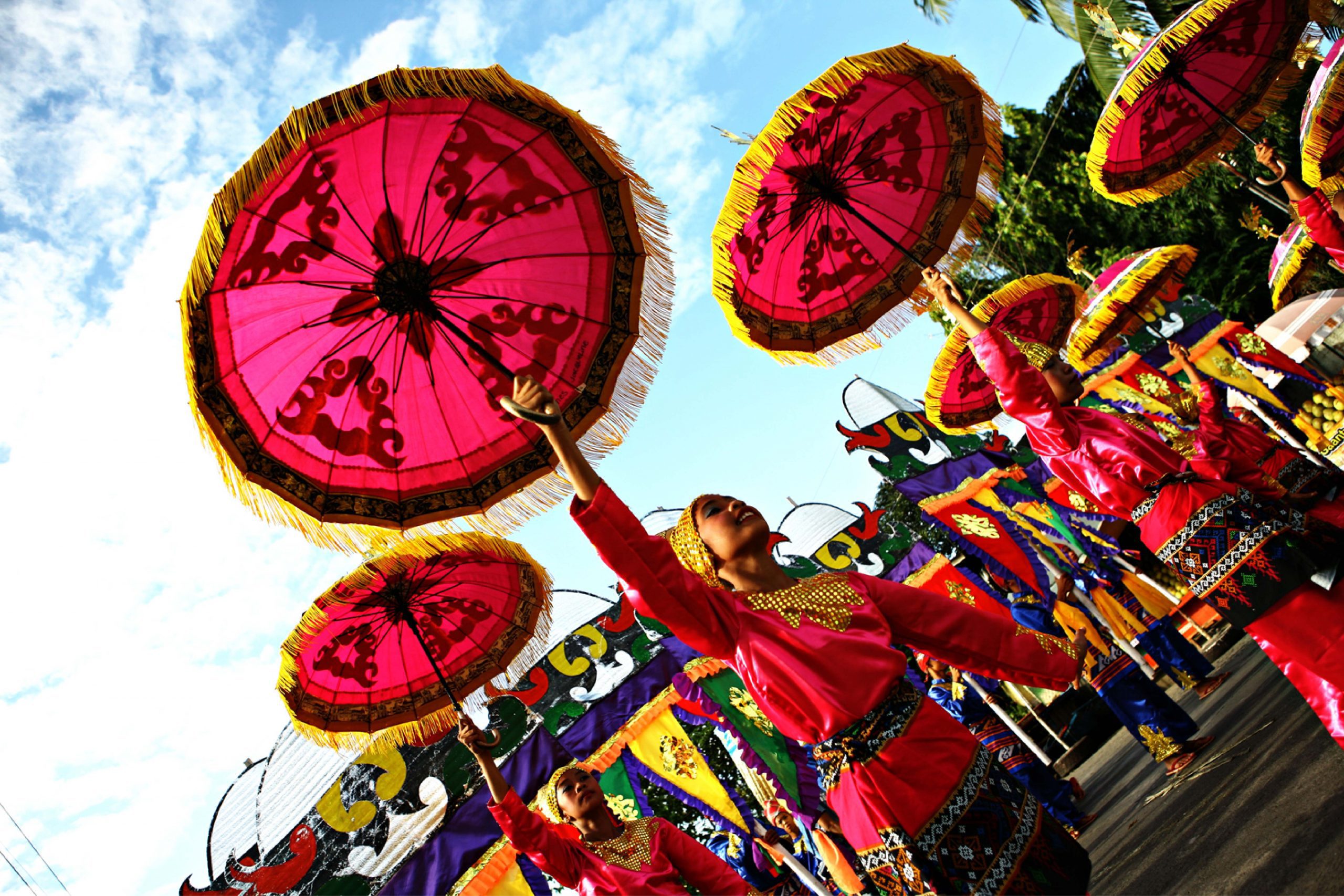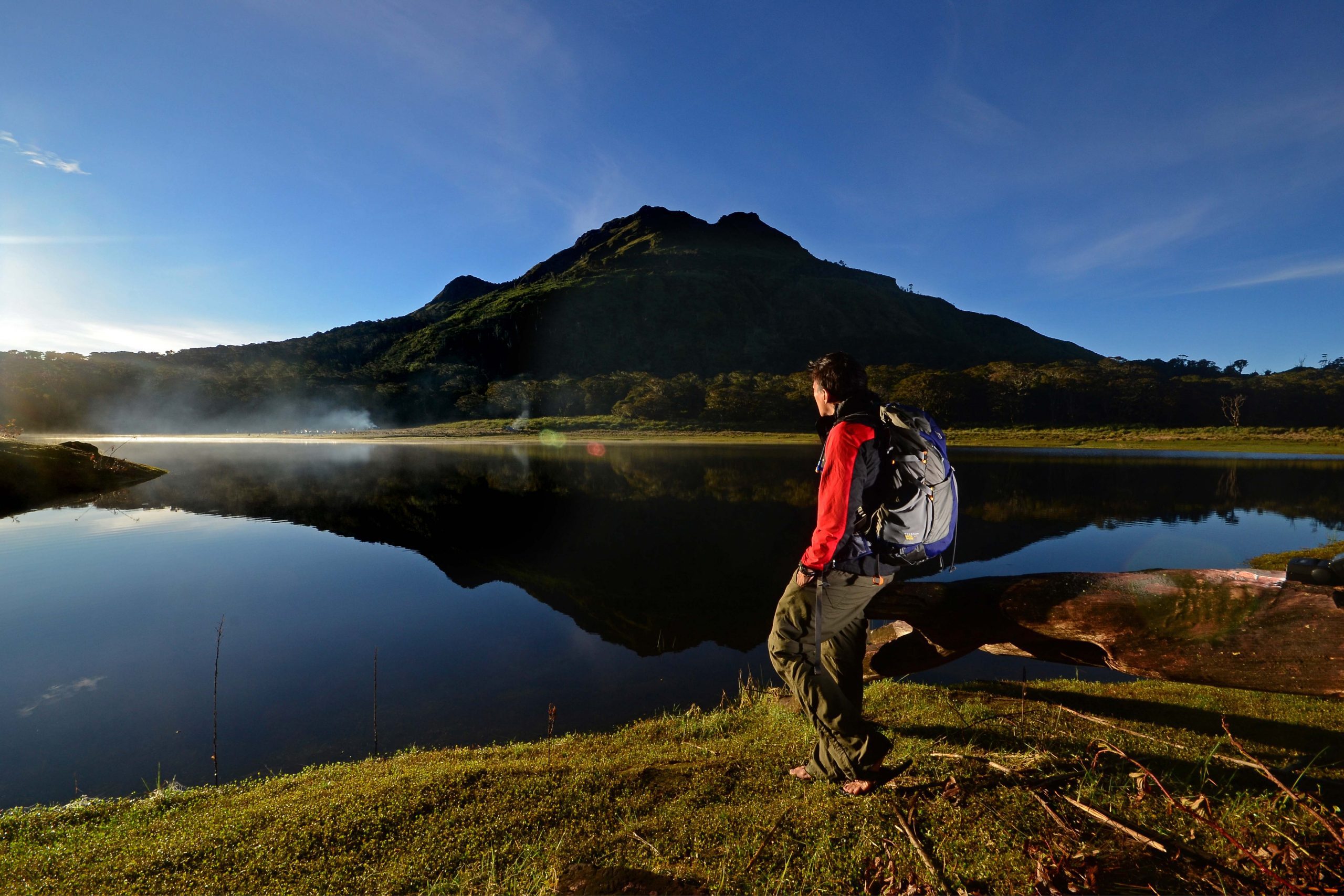PHILIPPINES
GEOGRAPHY
The Philippines is an archipelago of 7,107 islands east of Vietnam and north of Indonesia, divided into three major island groups: Luzon, Visayas, and Mindanao. It’s a tiny country of just under 2,000 kilometers in length, yet it boasts extensive mountain ranges, underwater landscapes, cave systems, plains, waterfalls, rock faces, rivers, lakes, and over 15,500 km. worth of beaches. In contrast to this abundance of natural wonder—the Philippines is home to some of the most bio-diverse areas on the planet—the bigger cities are quite cosmopolitan, with robust industry and infrastructure, notably Davao in Mindanao, Cebu in the Visayas, and the capital city of Manila in Luzon.


CLIMATE
The Philippines tends to be warm and humid year-round—wet during the rainy season from June to August, and merely damp during the brilliant tropical glory of summer, from March to May. The months from November to February are a touch cooler—though probably not by the standards of visitors hailing from colder climes—although some places, like Cebu and Davao, remain sunny and bright regardless of the season.
ARTS & CULTURE
Filipinos love to express themselves—you’ll see this right on the street, in the form of the colorful, outrageously-painted jeepneys and tricycles that ply the roads of practically every Philippine city, not to mention the grand spectacle of fiestas, in which people parade in vibrant costumes, singing, dancing, playing music, and more. There’s a fiesta happening somewhere almost every day, like Bacolod’s Masskara, Quezon’s Pahiyas, Cebu’s Sinulog, Davao’s Kadayawan, and Baguio’s Panagbenga, to name just a few.
The song and dance isn’t confined to festivals, either. International acts fly in constantly, the local performance scene is no less active, and karaoke is a popular pastime. On the more sober front, museums, art galleries, and theaters offer a glimpse of both ancient and modern culture. If you’re more adventurous, you might visit some of the indigenous villages that still practice age-old traditional arts and crafts. You could also try the more daring local delicacies such as dinuguan (pig’s blood stew), as the culinary arts are likewise thriving, with both local and a plethora of international cuisines served up in a dazzling array, by five-star gourmet chefs as well as street vendors.

GEOGRAPHY
The Philippines is an archipelago of 7,107 islands east of Vietnam and north of Indonesia, divided into three major island groups: Luzon, Visayas, and Mindanao. It’s a tiny country of just under 2,000 kilometers in length, yet it boasts extensive mountain ranges, underwater landscapes, cave systems, plains, waterfalls, rock faces, rivers, lakes, and over 15,500 km. worth of beaches. In contrast to this abundance of natural wonder—the Philippines is home to some of the most bio-diverse areas on the planet—the bigger cities are quite cosmopolitan, with robust industry and infrastructure, notably Davao in Mindanao, Cebu in the Visayas, and the capital city of Manila in Luzon.

CLIMATE
The Philippines tends to be warm and humid year-round—wet during the rainy season from June to August, and merely damp during the brilliant tropical glory of summer, from March to May. The months from November to February are a touch cooler—though probably not by the standards of visitors hailing from colder climes—although some places, like Cebu and Davao, remain sunny and bright regardless of the season.

ARTS & CULTURE
Filipinos love to express themselves—you’ll see this right on the street, in the form of the colorful, outrageously-painted jeepneys and tricycles that ply the roads of practically every Philippine city, not to mention the grand spectacle of fiestas, in which people parade in vibrant costumes, singing, dancing, playing music, and more. There’s a fiesta happening somewhere almost every day, like Bacolod’s Masskara, Quezon’s Pahiyas, Cebu’s Sinulog, Davao’s Kadayawan, and Baguio’s Panagbenga, to name just a few.
The song and dance isn’t confined to festivals, either. International acts fly in constantly, the local performance scene is no less active, and karaoke is a popular pastime. On the more sober front, museums, art galleries, and theaters offer a glimpse of both ancient and modern culture. If you’re more adventurous, you might visit some of the indigenous villages that still practice age-old traditional arts and crafts. You could also try the more daring local delicacies such as dinuguan (pig’s blood stew), as the culinary arts are likewise thriving, with both local and a plethora of international cuisines served up in a dazzling array, by five-star gourmet chefs as well as street vendors.

PLACES TO VISIT

City of Smiles
Bacolod is a city on the northwest coast of Negros Island in the Philippines. The 19th-century San Sebastian Cathedral stands beside Bacolod Public Plaza. Its original bells are on display in the churchyard outside. The Dizon-Ramos Museum is a 1950s house packed with memorabilia and photographs of the prominent family that once lived there. The Capitol Park and Lagoon has a lake and 2 golden water buffalo statues.

Crown Jewel of Mindanao
Davao City, on the southern Philippine island of Mindanao, is a coastal commercial center near 2,954m-high Mount Apo, the country’s highest peak. In the city center, People’s Park is known for its colorful indigenous sculptures and lighted fountains. It’s also home to Durian Dome, named after the pungent, spiky fruit that grows in abundance on Mindanao. The Davao River cuts through the city.

Queen City of the South
Cebu is a province of the Philippines, in the country’s Central Visayas region, comprising Cebu Island and more than 150 smaller surrounding islands and islets. Its prosperous port capital, Cebu City, retains landmarks from its 16th-century Spanish colonial past, including the Basilica Minore del Santo Niño church and triangular Fort San Pedro. Tops, an observation deck on Mt. Busay, has sweeping views over the city.

STAIRWAY TO THE SKY
Often described as “where land merges with the clouds to meet the heavens”, the Banaue rice terraces climb all the way from the base of the Cordillera mountain range to several thousand feet high, seemingly forming the proverbial stairway to heaven.
Ideal for nature adventures and cultural immersion, Banaue is a cool, crisp haven for strolling, biking, trekking, or—if you don’t mind a slightly chilly dip—swimming, in the spring-fed stream of Guihob or the magnificent Tappiya Waterfalls.
You can also pay a visit to one of the several villages that still keep to their ancient tribal traditions, where the local families are often happy to demonstrate native crafts in front of you, and will also amiably dicker over the price afterward.
Evenings might see you at a village campfire chat, or lounging at a posh mountain lodge.

A CHOCOHOLIC’S DREAM
The Chocolate Hills of Bohol are best visited in the summer, which is when the grass turns brown, making all 1,268 of these perfectly-symmetrical, gently-curved mounds of rock truly resemble massive—and massively delectable—chocolate bonbons. Rising some 30 meters above the ground, the Chocolate Hills have been declared a national geologic monument, such that two of the hills have been furnished with tourism facilities, among them a view deck, youth hostel, and restaurant.
Other attractions in the area include ecotourism at the Philippine Tarsier and Wildlife Sanctuary or the Loboc Ecotourism Adventure Park; a river cruise and Filipino buffet down Loboc River; and the dolphin- and whale-watching, dive sites, white sand beaches, and centuries-old Spanish fort over on Pamilacan Island.

BAREFOOT ON THE BEACH
Boracay has repeatedly been named one of the best beaches in the world, and deservedly so, somehow seamlessly merging a laid-back attitude with a definite party atmosphere. Going barefoot is the rule rather than the exception, and this is true whether you’re heading to a soothing waterfront massage or a frenzied all-night dance rave.
Beyond even the crystalline waters and white sands—described as “like walking on baby powder, but without clumps”—Boracay boasts some 350 tourist establishments. Many an international visitor to the island has made it their permanent home, leading to a dazzling assortment of cuisines available, from the local grilled seafood and calamansi (Philippine lemon) tarts to authentic Greek and Moroccan delicacies—and more.
There are arguably as many activities, as well, from para-sailing or jet skiing to island-hopping or walking the ocean floor in a swimsuit and old-school dive helmet, from bungee jumping and zorbing to getting a henna tattoo and learning to fire-dance.
MORE DESTINATIONS
PLACES TO VISIT
STAIRWAY TO THE SKY
Often described as “where land merges with the clouds to meet the heavens”, the Banaue rice terraces climb all the way from the base of the Cordillera mountain range to several thousand feet high, seemingly forming the proverbial stairway to heaven.
Ideal for nature adventures and cultural immersion, Banaue is a cool, crisp haven for strolling, biking, trekking, or—if you don’t mind a slightly chilly dip—swimming, in the spring-fed stream of Guihob or the magnificent Tappiya Waterfalls.
You can also pay a visit to one of the several villages that still keep to their ancient tribal traditions, where the local families are often happy to demonstrate native crafts in front of you, and will also amiably dicker over the price afterward.
Evenings might see you at a village campfire chat, or lounging at a posh mountain lodge.

A CHOCOHOLIC’S DREAM
The Chocolate Hills of Bohol are best visited in the summer, which is when the grass turns brown, making all 1,268 of these perfectly-symmetrical, gently-curved mounds of rock truly resemble massive—and massively delectable—chocolate bonbons.
Rising some 30 meters above the ground, the Chocolate Hills have been declared a national geologic monument, such that two of the hills have been furnished with tourism facilities, among them a view deck, youth hostel, and restaurant.
Other attractions in the area include ecotourism at the Philippine Tarsier and Wildlife Sanctuary or the Loboc Ecotourism Adventure Park; a river cruise and Filipino buffet down Loboc River; and the dolphin- and whale-watching, dive sites, white sand beaches, and centuries-old Spanish fort over on Pamilacan Island.

BAREFOOT ON THE BEACH
Boracay has repeatedly been named one of the best beaches in the world, and deservedly so, somehow seamlessly merging a laid-back attitude with a definite party atmosphere. Going barefoot is the rule rather than the exception, and this is true whether you’re heading to a soothing waterfront massage or a frenzied all-night dance rave.
Beyond even the crystalline waters and white sands—described as “like walking on baby powder, but without clumps”—Boracay boasts some 350 tourist establishments. Many an international visitor to the island has made it their permanent home, leading to a dazzling assortment of cuisines available, from the local grilled seafood and calamansi (Philippine lemon) tarts to authentic Greek and Moroccan delicacies—and more.
There are arguably as many activities, as well, from para-sailing or jet skiing to island-hopping or walking the ocean floor in a swimsuit and old-school dive helmet, from bungee jumping and zorbing to getting a henna tattoo and learning to fire-dance.

MORE DESTINATIONS
PLACES TO VISIT

STAIRWAY TO THE SKY
Often described as “where land merges with the clouds to meet the heavens”, the Banaue rice terraces climb all the way from the base of the Cordillera mountain range to several thousand feet high, seemingly forming the proverbial stairway to heaven.
Ideal for nature adventures and cultural immersion, Banaue is a cool, crisp haven for strolling, biking, trekking, or—if you don’t mind a slightly chilly dip—swimming, in the spring-fed stream of Guihob or the magnificent Tappiya Waterfalls.
You can also pay a visit to one of the several villages that still keep to their ancient tribal traditions, where the local families are often happy to demonstrate native crafts in front of you, and will also amiably dicker over the price afterward.
Evenings might see you at a village campfire chat, or lounging at a posh mountain lodge.

A CHOCOHOLIC’S DREAM
The Chocolate Hills of Bohol are best visited in the summer, which is when the grass turns brown, making all 1,268 of these perfectly-symmetrical, gently-curved mounds of rock truly resemble massive—and massively delectable—chocolate bonbons.
Rising some 30 meters above the ground, the Chocolate Hills have been declared a national geologic monument, such that two of the hills have been furnished with tourism facilities, among them a view deck, youth hostel, and restaurant.
Other attractions in the area include ecotourism at the Philippine Tarsier and Wildlife Sanctuary or the Loboc Ecotourism Adventure Park; a river cruise and Filipino buffet down Loboc River; and the dolphin- and whale-watching, dive sites, white sand beaches, and centuries-old Spanish fort over on Pamilacan Island.

BAREFOOT ON THE BEACH
Boracay has repeatedly been named one of the best beaches in the world, and deservedly so, somehow seamlessly merging a laid-back attitude with a definite party atmosphere. Going barefoot is the rule rather than the exception, and this is true whether you’re heading to a soothing waterfront massage or a frenzied all-night dance rave.
Beyond even the crystalline waters and white sands—described as “like walking on baby powder, but without clumps”—Boracay boasts some 350 tourist establishments. Many an international visitor to the island has made it their permanent home, leading to a dazzling assortment of cuisines available, from the local grilled seafood and calamansi (Philippine lemon) tarts to authentic Greek and Moroccan delicacies—and more.
There are arguably as many activities, as well, from para-sailing or jet skiing to island-hopping or walking the ocean floor in a swimsuit and old-school dive helmet, from bungee jumping and zorbing to getting a henna tattoo and learning to fire-dance.
MORE DESTINATIONS
PLACES TO VISIT
City of Smiles
Bacolod is a city on the northwest coast of Negros Island in the Philippines. The 19th-century San Sebastian Cathedral stands beside Bacolod Public Plaza. Its original bells are on display in the churchyard outside. The Dizon-Ramos Museum is a 1950s house packed with memorabilia and photographs of the prominent family that once lived there. The Capitol Park and Lagoon has a lake and 2 golden water buffalo statues.

Crown Jewel of Mindanao
Davao City, on the southern Philippine island of Mindanao, is a coastal commercial center near 2,954m-high Mount Apo, the country’s highest peak. In the city center, People’s Park is known for its colorful indigenous sculptures and lighted fountains. It’s also home to Durian Dome, named after the pungent, spiky fruit that grows in abundance on Mindanao. The Davao River cuts through the city.

Queen City of the South
Cebu is a province of the Philippines, in the country’s Central Visayas region, comprising Cebu Island and more than 150 smaller surrounding islands and islets. Its prosperous port capital, Cebu City, retains landmarks from its 16th-century Spanish colonial past, including the Basilica Minore del Santo Niño church and triangular Fort San Pedro. Tops, an observation deck on Mt. Busay, has sweeping views over the city.

STAIRWAY TO THE SKY
Often described as “where land merges with the clouds to meet the heavens”, the Banaue rice terraces climb all the way from the base of the Cordillera mountain range to several thousand feet high, seemingly forming the proverbial stairway to heaven.
Ideal for nature adventures and cultural immersion, Banaue is a cool, crisp haven for strolling, biking, trekking, or—if you don’t mind a slightly chilly dip—swimming, in the spring-fed stream of Guihob or the magnificent Tappiya Waterfalls.

A CHOCOHOLIC’S DREAM
The Chocolate Hills of Bohol are best visited in the summer, which is when the grass turns brown, making all 1,268 of these perfectly-symmetrical, gently-curved mounds of rock truly resemble massive—and massively delectable—chocolate bonbons.
Rising some 30 meters above the ground, the Chocolate Hills have been declared a national geologic monument. Other attractions in the area include ecotourism at the Philippine Tarsier and Wildlife Sanctuary or the Loboc Ecotourism Adventure Park; a river cruise down Loboc River; and the dolphin- and whale-watching, dive sites, white sand beaches, and centuries-old Spanish fort over on Pamilacan Island.

BAREFOOT ON THE BEACH
Boracay has repeatedly been named one of the best beaches in the world, and deservedly so, somehow seamlessly merging a laid-back attitude with a definite party atmosphere. Going barefoot is the rule rather than the exception, and this is true whether you’re heading to a soothing waterfront massage or a frenzied all-night dance rave.
Beyond even the crystalline waters and white sands—described as “like walking on baby powder, but without clumps”— Delight in an assortment of cuisines, from the grilled seafood and calamansi (Philippine lemon) tarts to authentic Greek and Moroccan delicacies—and more.
There are arguably as many activities from para-sailing or jet skiing to island-hopping or walking the ocean floor in a swimsuit and old-school dive helmet, from bungee jumping and zorbing to getting a henna tattoo and learning to fire-dance.


